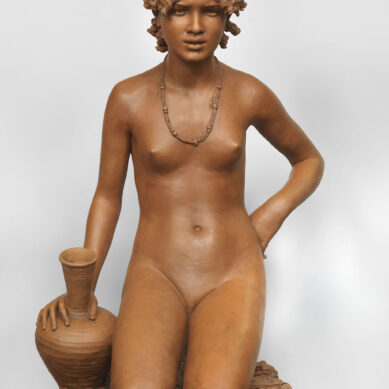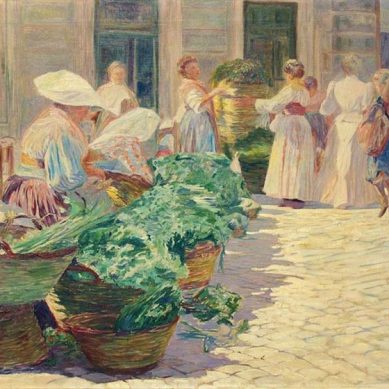You searched
Sculptor
Augusto Felici
Are you interested in the sales or the purchase of his artworks?
We buy works of this artist
and of other painters and sculptors from the 16th century to the first half of the 20th century
The Berardi gallery offers a free and without obligation service for evaluation of ancient and modern art . To find your way in the art market, very complex and full of nuances, it is better to rely on a professional consultant who can answer fast and concretely to your needs. The clarity of the answers will resolve effectively the need to estimate or sell an asset.
Contact us immediately without commitment
Answers also in 24 hours:
Augusto Felici
Augusto Felici
The son of a non-commissioned officer of the Papal guard, Augusto Felici received his initial training at the convent of S. Clemente in Trastevere, and then went on to the Accademia di S. Luca, where he won the second prize for nude drawing in 1869 and the second prize for sculpture in 1871, also being commended with honours for his nude drawings, and finally to the Tadolini Canova studio. Having moved to Venice by 1872, he entered the workshop of the foundryman Besarel, and once on his own opened a studio in Campo Santa Margherita, which was later transferred to the Grand Canal thanks to the success his sculptures enjoyed with an important international clientele.
The debut of his flourishing exhibition activity dates back to 1880, when a group of terracottas and bronzes made to his models by the Venetian foundry of Pasquale Arquati, who was also an antiquarian, was exhibited in the hall of applied arts to industry at the IV National Exhibition of Fine Arts in Turin. The creation of six allegorical marble panels to decorate the staircase built by Camillo Boito between 1881 and 1886 for the Venetian residence of Baron Franchetti and Sara Rotschild brought him great fame. It was thanks to these that in June 1887, when the raja of Baroda (a court that was reabsorbed into the Indian state of Gujarat in 1949) Sayajirao III was in Venice, the Geneva architect Albert Fillion, his advisor in Europe, proposed Felici as court sculptor. Felici dictated a series of conditions including travelling expenses in first class, a monthly salary of 2500 francs and permission to return to Italy for the summer and during the rainy season.
On 16 December 1889, paperwork was started to hire him as court sculptor with a three-year assignment to execute ‘the statues of the Indian subjects’ for the grand new royal residence of Laxmi Vilas, conceived in Indo-Saracenic style with neo-Gothic assonances to be a symbol of the new world that was to arise from the union of European and Asian traditions (Kannès 2015). In his five stays in Baroda between 1891 and 1896, Felici was probably the first to depict subjects of Indian life in sculpture, from dignitaries of the raja’s court to castellated types, partly documented in a photo album kept by his heirs. The castings were all executed in Venice. The artist was invited to study occasions that might have inspired him, such as sathamarao (elephant fighting), or portraying the Sadhu, an ascetic of the Hindu religion usually mistaken for a fakiro.
Alessandra Imbellone









